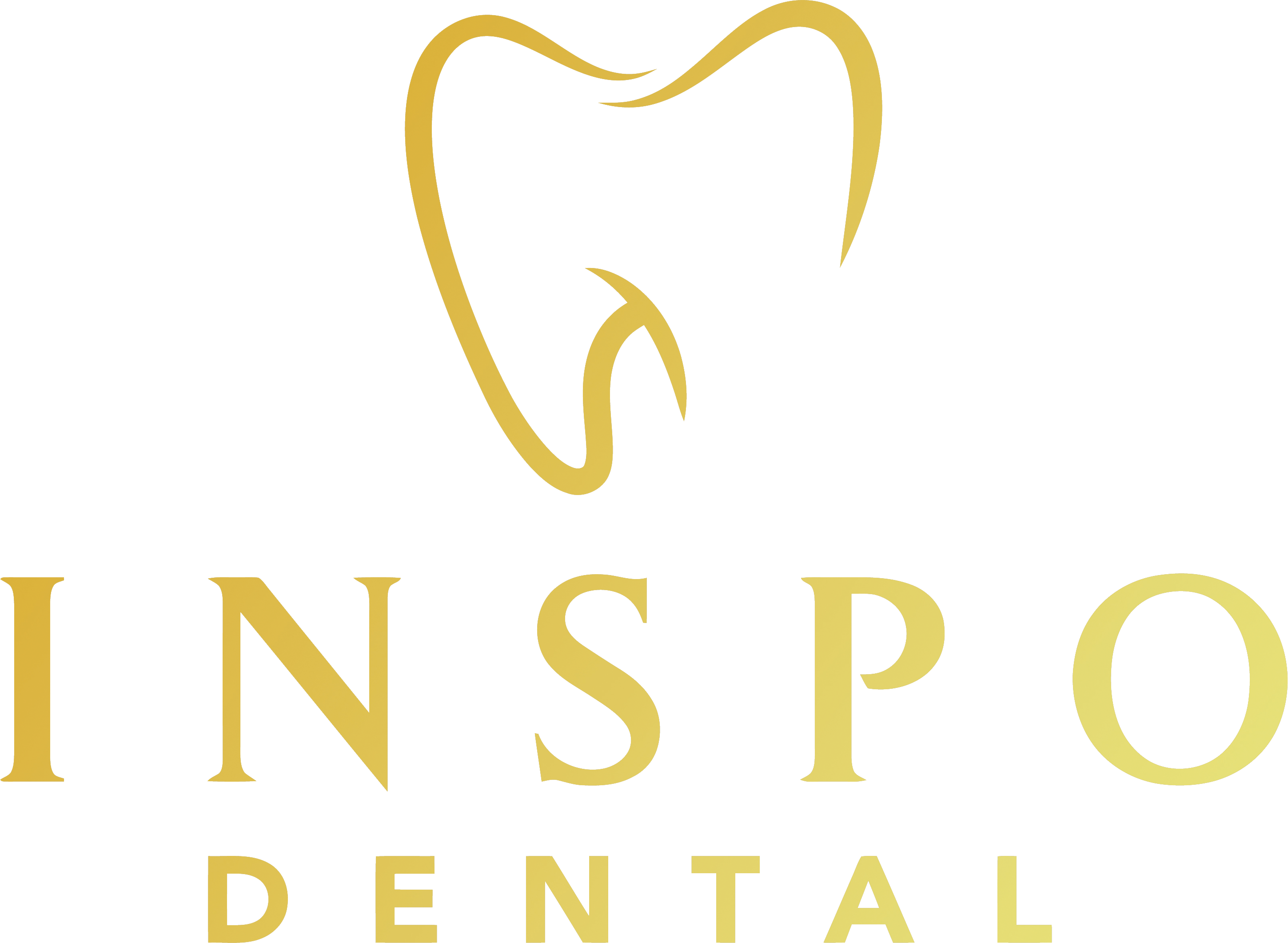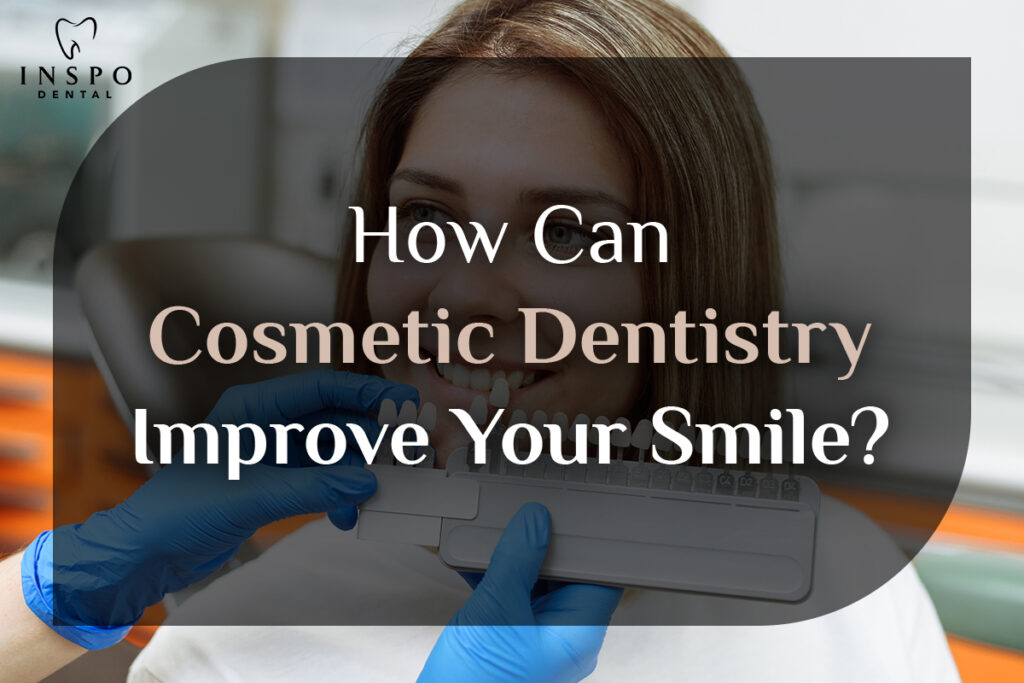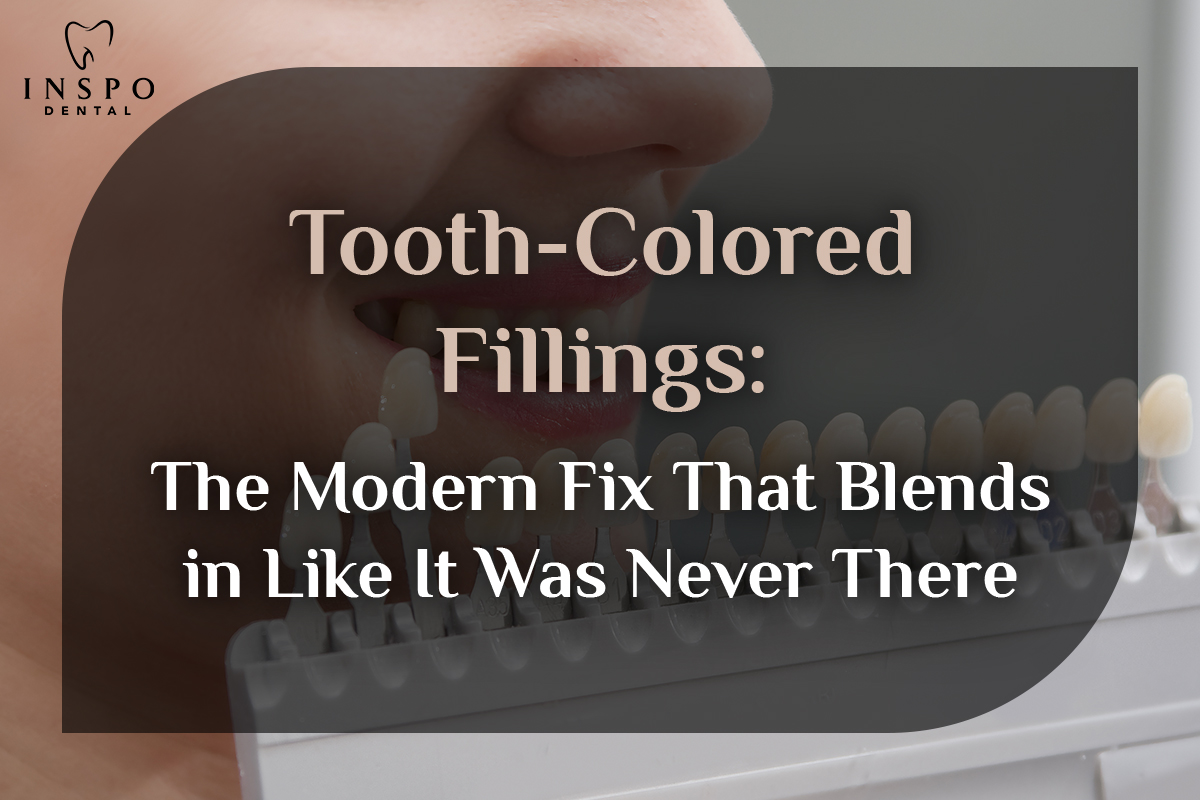Cosmetic dentistry encompasses a range of dental procedures aimed at improving the appearance of your smile. These procedures can address various dental issues such as discoloration, misalignment, gaps, and damaged teeth. Here’s how cosmetic dentistry can enhance your smile:
Teeth Whitening
Overview: Teeth whitening is one of the most popular cosmetic dental procedures. It involves the use of bleaching agents to lighten the color of your teeth, removing stains and discoloration caused by food, drinks, smoking, and aging.
Benefits:
- Improved Appearance: A whiter smile can boost your confidence and make you look more youthful.
- Quick Results: Professional teeth whitening can show significant results in a short period, often within a single visit.
- Non-Invasive: It is a non-invasive procedure that does not involve any alteration of the tooth structure.
Dental Veneers
Overview: Veneers are thin shells made of porcelain or composite resin that are custom-made to fit over the front surface of your teeth. They are used to correct a variety of dental issues, including chipped, stained, misaligned, or unevenly spaced teeth.
Benefits:
- Natural Appearance: Veneers are designed to look like natural teeth, providing a seamless enhancement to your smile.
- Durability: Porcelain veneers are highly durable and can last for many years with proper care.
- Stain Resistance: Porcelain veneers are resistant to staining, keeping your smile bright for a longer period.
Dental Crowns
Overview: Dental crowns, also known as caps, are used to restore the shape, size, strength, and appearance of a damaged tooth. They fully encase the visible portion of the tooth above the gum line.
Benefits:
- Strength and Protection: Crowns provide a strong and protective cover for damaged or weakened teeth, preventing further damage.
- Aesthetic Improvement: Crowns can be made from materials that match the color of your natural teeth, enhancing your smile.
- Versatility: They can be used for a variety of issues, including broken teeth, severe decay, and after root canal therapy.
Dental Implants
Overview: Dental implants are a permanent solution for missing teeth. They involve surgically placing a titanium post into the jawbone, which acts as a replacement root. An artificial tooth is then attached to this post.
Benefits:
- Natural Look and Feel: Implants look and function like natural teeth, providing a permanent solution.
- Bone Preservation: They help preserve the jawbone, preventing bone loss that can occur with missing teeth.
- Longevity: With proper care, dental implants can last a lifetime.
Orthodontic Treatments (Braces and Invisalign)
Overview: Orthodontic treatments involve the use of braces or clear aligners like Invisalign to correct misaligned teeth and bite issues.
Benefits:
- Improved Alignment: Straightening teeth improves not only the appearance but also the function of your teeth.
- Better Oral Health: Properly aligned teeth are easier to clean, reducing the risk of cavities and gum disease.
- Versatility: Options like traditional braces or clear aligners can cater to different preferences and needs.
Composite Bonding
Overview: Composite bonding involves applying a tooth-colored resin to repair chipped, decayed, discolored, or misaligned teeth. The material is shaped and polished to match the surrounding teeth.
Benefits:
- Quick and Effective: Bonding can usually be completed in one visit and provides immediate results.
- Cost-Effective: It is generally less expensive than other cosmetic procedures.
- Minimally Invasive: Little to no removal of the tooth structure is required.
Gum Contouring
Overview: Gum contouring, or gingivectomy, is a procedure to reshape the gum line. It can be used to correct a “gummy” smile where too much gum tissue shows, or to even out an uneven gum line.
Benefits:
- Enhanced Smile: Reshaping the gums can create a more balanced and symmetrical smile.
- Improved Oral Health: Removing excess gum tissue can reduce places where bacteria can accumulate, improving gum health.
- Permanent Results: The results of gum contouring are typically permanent.
Inlays and Onlays
Overview: Inlays and onlays, also known as partial crowns, are used to restore teeth that have been damaged by decay or trauma but do not require a full crown. They are made from composite resin, porcelain, or gold and are bonded to the damaged area of the tooth.
Benefits:
- Strength and Durability: Inlays and onlays are stronger than traditional fillings and can last longer. They provide structural integrity to the damaged tooth, enhancing its strength and function.
- Conservative Treatment: They require less removal of the natural tooth structure compared to full crowns, preserving more of the healthy tooth.
- Aesthetics: Porcelain inlays and onlays are tooth-colored, blending seamlessly with natural teeth for a natural look.
Considerations:
- Cost: They are typically more expensive than traditional fillings but less than full crowns.
- Multiple Visits: The procedure usually requires two visits to complete—one for preparation and impression-taking, and another for fitting and bonding the inlay or onlay.
Smile Makeovers
Overview: A smile makeover involves one or more cosmetic dentistry procedures to improve the overall appearance of your smile. This comprehensive approach is customized to address your specific dental issues and aesthetic goals.
Benefits:
- Personalized Treatment: Each smile makeover is tailored to the individual’s needs, combining various procedures such as teeth whitening, veneers, crowns, implants, and orthodontics.
- Comprehensive Improvement: Smile makeovers can address multiple issues simultaneously, including color, alignment, spacing, and tooth damage, leading to a dramatically improved smile.
- Boosted Confidence: A complete smile makeover can significantly boost your confidence and self-esteem by transforming your smile.
Considerations:
- Cost and Time: Smile makeovers can be expensive and time-consuming, depending on the number and type of procedures involved.
- Commitment to Maintenance: Ongoing dental care and maintenance are required to preserve the results of a smile makeover.
Enamel Shaping and Contouring
Overview: Enamel shaping and contouring is a quick and painless procedure used to correct minor imperfections such as small chips, uneven edges, or slight overlaps in teeth. The dentist carefully removes small amounts of enamel to reshape the teeth and improve their appearance.
Benefits:
- Immediate Results: This procedure provides instant results, enhancing the shape and appearance of teeth in a single visit.
- Non-Invasive: It is a minimally invasive treatment that does not require anesthesia.
- Subtle Enhancements: Ideal for making small, subtle changes that can significantly improve the smile’s overall appearance.
Considerations:
- Limited Scope: Enamel shaping and contouring are suitable for minor corrections only. More significant issues may require other cosmetic procedures.
- Enamel Sensitivity: Removing enamel can increase tooth sensitivity, though this is typically minimal.
Full Mouth Reconstruction
Overview: Full mouth reconstruction involves rebuilding or restoring all of the teeth in both the upper and lower jaws. It combines cosmetic and restorative dentistry techniques to improve the function, health, and aesthetics of the mouth.
Benefits:
- Comprehensive Restoration: Addresses multiple dental issues, such as decayed, damaged, or missing teeth, in a coordinated manner.
- Functional Improvement: Enhances chewing, speaking, and overall oral function, leading to better health and comfort.
- Aesthetic Enhancement: Significantly improves the appearance of the smile, boosting confidence and self-esteem.
Considerations:
- Complexity and Time: This extensive process can involve multiple procedures and specialists, taking several months to complete.
- Cost: Full mouth reconstruction is often expensive due to the comprehensive nature of the treatment plan.
Cosmetic Bonding
Overview: Cosmetic bonding involves applying a tooth-colored resin to repair chipped, decayed, discolored, or misaligned teeth. The material is shaped and polished to match the surrounding teeth.
Benefits:
- Quick and Effective: Typically completed in one visit, cosmetic bonding provides immediate improvements to the appearance of teeth.
- Cost-Effective: It is generally less expensive than other cosmetic procedures such as veneers or crowns.
- Minimally Invasive: Requires little to no removal of the tooth structure.
Considerations:
- Durability: While effective, the bonding material is not as strong as natural teeth or other restorative materials and may need to be replaced or touched up over time.
- Staining: The resin used in bonding can stain over time, similar to natural teeth, necessitating good oral hygiene and possibly avoiding certain foods and drinks.
Teeth Shaping (Odontoplasty)
Overview: Teeth shaping, or odontoplasty, involves reshaping the enamel of teeth to improve their appearance. This procedure can correct minor imperfections such as small chips, irregular shapes, or slightly misaligned teeth.
Benefits:
- Immediate Results: The procedure can be completed in a single visit, providing instant aesthetic improvements.
- Non-Invasive: It is a painless and minimally invasive procedure that does not require anesthesia.
- Subtle Enhancements: Ideal for making minor changes that significantly enhance the overall look of your smile.
Considerations:
- Limited Scope: Suitable for minor adjustments only; more significant dental issues may require other cosmetic treatments.
- Enamel Removal: Removing enamel is permanent, and care must be taken not to remove too much, which could increase tooth sensitivity.
Dental Contouring
Overview: Dental contouring, similar to teeth shaping, involves removing small amounts of tooth enamel to change the shape, length, or surface of teeth. It is often combined with bonding for more comprehensive results.
Benefits:
- Enhanced Smile: Improves the symmetry and appearance of teeth, contributing to a more attractive smile.
- Non-Invasive: Requires no recovery time and causes minimal discomfort.
- Quick Procedure: Usually completed in one visit, offering immediate visual improvements.
Considerations:
- Minor Corrections: Best suited for minor adjustments; significant issues may require other procedures.
- Sensitivity: Removing enamel can increase tooth sensitivity, especially if too much enamel is removed.
Gingival Sculpting
Overview: Gingival sculpting, or gum reshaping, is a procedure that involves removing excess gum tissue to improve the appearance of the gum line. It is often used to correct a “gummy” smile or uneven gum line.
Benefits:
- Aesthetic Improvement: Creates a more balanced and symmetrical smile by adjusting the gum line.
- Enhanced Oral Health: Removing excess gum tissue can reduce the risk of periodontal disease by eliminating pockets where bacteria can accumulate.
- Permanent Results: The results of gingival sculpting are typically permanent, providing a lasting enhancement to your smile.
Considerations:
- Surgery: As a surgical procedure, it involves some level of discomfort and a recovery period.
- Cost: The procedure can be costly, depending on the extent of the gum reshaping required.
Tooth-Colored Fillings
Overview: Tooth-colored fillings, also known as composite fillings, are used to repair cavities or damage in teeth. Unlike traditional amalgam fillings, composite fillings are made from a mixture of plastic and fine glass particles, and they can be closely matched to the color of your natural teeth.
Benefits:
- Aesthetics: The fillings blend in seamlessly with the natural color of your teeth, making them virtually invisible.
- Bonding: Composite fillings bond directly to the tooth structure, providing additional support.
- Versatility: They can be used to repair chipped, broken, or worn teeth in addition to cavities.
Considerations:
- Durability: While durable, composite fillings may not last as long as amalgam fillings, especially on biting surfaces.
- Cost: Tooth-colored fillings are typically more expensive than amalgam fillings.
Porcelain Inlays and Onlays
Overview: Porcelain inlays and onlays are used to repair teeth with moderate decay or damage that is too extensive for a simple filling but not severe enough for a full crown. Inlays fit inside the cusp tips of the tooth, while onlays extend over one or more cusps.
Benefits:
- Aesthetics: Porcelain inlays and onlays are tooth-colored and provide a natural look.
- Strength: They are stronger and more durable than composite fillings.
- Preservation of Tooth Structure: They require less removal of the natural tooth compared to crowns.
Considerations:
- Multiple Visits: The procedure typically requires two dental visits.
- Cost: Porcelain inlays and onlays are more expensive than fillings but less than crowns.
Laser Dentistry
Overview: Laser dentistry uses laser technology for a variety of dental treatments, including teeth whitening, gum contouring, cavity removal, and more. Lasers provide a precise and less invasive option for many procedures.
Benefits:
- Precision: Lasers allow for more precise treatments, reducing damage to surrounding tissues.
- Comfort: Procedures with lasers can be less painful, reducing the need for anesthesia.
- Healing Time: Laser treatments often result in faster healing times and less post-operative discomfort.
Considerations:
- Cost: Laser treatments can be more expensive than traditional methods.
- Availability: Not all dental practices have laser technology available.
Snap-On Smile
Overview: Snap-On Smile is a removable dental appliance made from a high-tech dental resin that snaps over your existing teeth. It is used to cover gaps, crooked, stained, or missing teeth, providing an instant smile makeover.
Benefits:
- Non-Invasive: No drilling, injections, or adhesives are needed.
- Immediate Results: Provides an instant improvement in the appearance of your smile.
- Removable: It can be removed at any time, allowing for easy cleaning.
Considerations:
- Durability: While durable, Snap-On Smile is not a permanent solution and may need replacement over time.
- Comfort: It may take some time to get used to wearing the appliance.
Invisalign
Overview: Invisalign uses a series of clear, removable aligners to straighten teeth. The aligners are custom-made for each patient and gradually move the teeth into the desired position.
Benefits:
Aesthetic Appeal: The clear aligners are virtually invisible, making them an attractive option for adults and teens.
Removable: Aligners can be removed for eating, drinking, brushing, and flossing, making them more convenient than traditional braces.
Comfort: Invisalign aligners are made of smooth plastic, reducing the likelihood of irritation to the gums and cheeks.
Considerations:
- Discipline Required: Aligners need to be worn for 20-22 hours per day for effective results.
- Cost: Invisalign can be more expensive than traditional braces.
Conclusion
Cosmetic dentistry offers numerous procedures that can significantly enhance the appearance and functionality of your teeth, leading to a healthier and more attractive smile. From teeth whitening and veneers to full mouth reconstructions and laser dentistry, these procedures can address various dental issues and improve your overall oral health. Consulting with a cosmetic dentist is crucial to determine the most appropriate treatments for achieving your desired results. Regular professional evaluations and good oral hygiene practices are essential to maintaining the benefits of cosmetic dentistry and ensuring long-lasting oral health.






